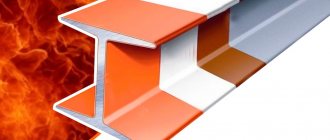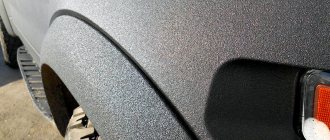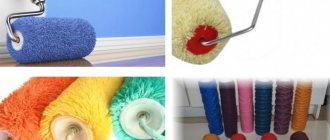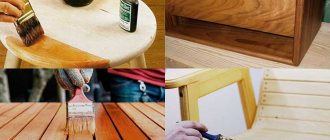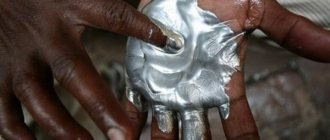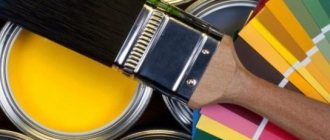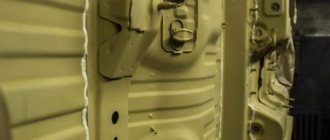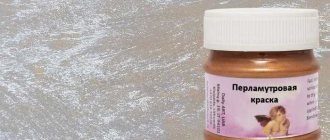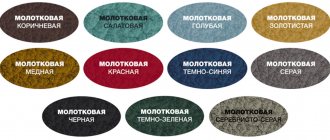There are a number of technological operations that have a high degree of negative impact on equipment. One such process is the galvanization process. In such conditions, you definitely cannot do without a high-quality chemical-resistant coating. Most of these products are more expensive, however, you can purchase acid- and alkali-resistant paint AntikorHim from us at an affordable price.
Description and characteristics
In stores today there is a variety of acid-resistant paints, which differ from each other in the components included in the composition, characteristics and properties. But they have something in common - before using such dyes, it is imperative to properly prepare the surface.
One of the most famous and popular acid-resistant compounds is XB 785 paint, which has been produced since the time of the Soviet Union. Many surfaces that are used in an aggressive chemical environment are painted with this paint and varnish material.
Important! The technical characteristics of acid-resistant paints and their properties are described in detail in GOST 7313-75.
These solutions have the following properties:
- are based on two resins - polyvinyl chloride and alkyd. These substances are diluted with the help of some organic solvent; in addition, the composition contains plasticizers, driers, and pigment additives. All these components are contained in a strictly defined proportion, due to which acid-resistant paints have high technical performance and have good resistance to aggressive substances and the external environment;
- can be applied to different types of materials, including plastered, concrete, metal, brick, and other surfaces. Acid-resistant paints are used for painting both outdoor objects and house facades, as well as interior walls, floors and ceilings;
- the compositions can only be used as one of the elements of comprehensive material protection. That is, if you paint unprepared material with this type of paint, the manufacturer will disclaim warranty responsibility for the safety of the characteristics of the paint and varnish products;
- after the paint layer has dried, it will acquire all the properties declared by the manufacturer. It is important to keep in mind that acid-resistant mixtures lose their characteristics when heated to temperatures above 60 degrees;
- These mixtures can only be applied by pneumatic spraying. Do not paint with a roller or brush.
Varieties
It is worth noting that the product range includes a number of colors. The palette is presented in the following shades:
- white;
- yellow;
- red;
- black;
- grey.
The most popular type of paint is gray. It is mainly used to paint chemical and industrial equipment. According to GOST, different colors are allowed for XB-124, 785 enamels.
After painting the elements and following all technical recommendations on the packaging, the surface will be isolated from the adverse effects of the environment. The characteristics of the barrier function are guaranteed by the manufacturer. It is not recommended to use the product at temperatures above 60ºС, as this will reduce the quality properties of the paint.
Priming before painting
Before painting the surface with acid-resistant paint for metal or concrete, it is necessary to perform priming. For XB-785, XB-784 varnish is suitable, used as a primer. The properties and characteristics of this varnish are regulated by GOST 7313-75.
Thanks to the use of a primer, the base will be much stronger, the adhesion of the paint to the surface will be significantly improved, and accordingly the service life of the painted structure will be significantly extended.
Two-component paints
Today, two-component paint mixtures that combine hydrocarbon resin and epoxy paint are very popular. Such paint and varnish compositions have the following features:
- The two components are in different containers; before using this acid-resistant wall paint, you must thoroughly mix both ingredients. It is important that a homogeneous mass is obtained, otherwise the properties of the paint and varnish material will be deteriorated. It is advisable to carry out the mixing process with a drill with a special mixer attachment. It is recommended to mix the mixture at low speeds so that the solution does not splash;
- Two-component acid-resistant paint can be applied with a roller, brush or spray. It is necessary to choose a specific painting method based on the task and amount of work;
- The painting process must be carried out using personal protective equipment, such as thick outerwear, a respirator, goggles, and gloves. Do not allow the dye solution to come into contact with the skin, as this may cause irritation or an allergic reaction;
- approximately 24 hours after painting, the applied layer will dry and be ready for use in any adverse conditions.
Important! The surface on which the acid-resistant mixture is applied can be safely washed using chemical detergents. They will not harm the painted layer or change its properties.
Details
Priming with varnish composition
Before painting the surface, it should be primed; for paint XB-785, the varnish composition XB-784 is used as a primer. The characteristics of such a varnish product, as well as its quality parameters, are determined by the provisions of GOST 7313-75. The use of a primer varnish composition makes it possible to strengthen the base and also achieve ideal adhesive properties of the coating. It is priming that will ensure the reliability of the protective coating and makes it possible to extend its service life.
Two-component products
Recently, two-component products that combine epoxy paints and hydrocarbon resins have become increasingly popular. Paintwork materials of this type are characterized by the following qualities:
- The components of acid-resistant paint for battery rooms are offered separately and should therefore be mixed before painting. In this case, it is necessary to achieve complete homogeneity of the composition, since the properties of the coating will be much worse than they could be. It is recommended to mix the components using a drill with a mixer installed on it. It is better to stir the mixture at low speeds so as not to start splashing the liquid.
- Two-component products can be applied not just with a spray, but also with a roller and brush. The choice of a specific surface treatment method will be dictated by the tasks at hand and the amount of paint.
- The paint-type composition should be applied using protective agents. You will need a respirator, gown and gloves. If you do not think about safety, paint and varnish material that gets on the skin can cause allergies or irritation.
- Approximately 24 hours after painting, the coating will dry and be ready for use in adverse external conditions.
Please note that surfaces painted with anti-acid paints can be washed using detergents. This will not damage the base or change its characteristics.
Features of the work
When performing work, you should adhere to a number of rules:
- Acid-resistant paints for wall surfaces must not be diluted with foreign ingredients. This will negatively affect the quality of the coating.
- His weather forecast will call for rain and work should be cancelled. According to technological requirements, the surface must dry without direct contact with water.
- Painting should only be done on a dry surface.
- The base should not be dirty under any circumstances, and dust, debris and oil stains must be removed from it.
- The surface should not be loose. If this is the case, you need to either abandon painting or take measures to create a surface that will be much denser.
- Painting work can only be carried out in the recommended temperature mode - the maximum temperature is +30 degrees, and the minimum is +5 degrees.
The work is carried out in this order:
- The first step is to remove dirt from the surface.
- If the base is wet, it should be dried. If necessary, you can use a heat gun or a hair dryer.
- Painting is carried out in two layers, and this is the minimum requirement, because in certain cases three or four layers of paint may be required.
Let’s take a separate look at AntikorKhim paint.
Rules, recommendations for coloring
When painting, it is important to adhere to the following recommendations from experts:
- Acid-resistant paint mixtures must not be diluted with any foreign substances. Adding any components that are not in the composition will negatively affect the resistance and durability of the painted layer;
- If painting is done outside and rain or fog is expected, it is important to cancel the work completely. Painting must be done in sunny, dry weather, since the applied paint must dry without contact with moisture and water;
- the surface on which the composition is applied must be completely dry, there should be no condensation or moisture on it;
- before painting, any contaminants are removed from the structure, including debris, dirt, dust, old paints and grease stains;
- The surface to be painted should be dense, not loose. If it is loose, it is necessary either to refuse painting or to take measures to compact the base;
- It is important to carry out painting in the temperature range recommended by the manufacturer, usually a temperature from +5 to +30 degrees.
All painting work is carried out in the following sequence:
- Any contaminants are removed from the material being painted.
- The surface is dried if it is not dry. For drying, you can use a heat gun or a hair dryer (preferably a hair dryer).
- A layer of primer is applied to the cleaned, dried base.
- After the primer has dried, the first layer of paint is applied. When it dries, apply the 2nd and, if necessary, 3rd and 4th layers of acid-resistant paint. Each subsequent painting is carried out only when the previous layer has dried.
Features of surface preparation
There are a whole host of rules that should never be broken:
- Anti-acid paint should never be diluted; this directly affects the protective properties and may cause subsequent rework.
- Work cannot begin if rain is forecast - drying should take place at normal humidity without direct contact with water.
- Do not paint wet surfaces under any circumstances; the composition will not adhere to such substrates.
- The surface must be cleaned of dirt and various stains. If the base is too loose, work is also not recommended.
- The solution should be applied at a temperature from +5 to +30 degrees. Too low, as well as too high a temperature, is extremely undesirable.
The work is carried out according to the following algorithm:
- First, the surface must be cleaned of dirt; if there are stains of bitumen or petroleum products on it, they should be removed. You also need to monitor the humidity; if necessary, dry it using a hair dryer or a heat gun.
- Next, a primer layer is applied for painting, which strengthens the base and improves surface adhesion.
Primer is an important element of the work process
- The instructions require processing in at least two layers. It is best to apply even three.
Acid- and alkali-resistant paint “AntikorKhim”
In addition to the XB-785 paint and varnish material, other anti-acid paint mixtures are also produced. One of them is AntikorKhim paint. It is used to treat the following surfaces, installations and equipment:
- containers, metal structures, technological equipment that during operation come into contact with alkaline or acidic substances;
- various containers in which alcohols, acids, and petrochemical products are transported or stored;
- hydraulic structures, sea vessels;
- piles made of metal or reinforced concrete, piers that are constantly in contact with sea water;
- metal structures that are operated under conditions of increased mechanical load, for example, platforms, stair steps, railings, handrails, and others.
The main advantages of the paint and varnish material “AntikorChem”:
- high resistance to aggressive chemicals. This composition is specially manufactured for use in extreme conditions;
- resistance to high temperature. The painted layer does not lose its characteristics when heated to a temperature of 70 degrees;
- there is no need to carefully prepare the surface before painting. The paint and varnish mixture can even be applied to rust;
- short time required for the composition to dry;
- versatility of use. “AntikorChem” can be applied to iron, galvanized steel and various types of non-ferrous metals. This solution has excellent adhesion to various surfaces.
